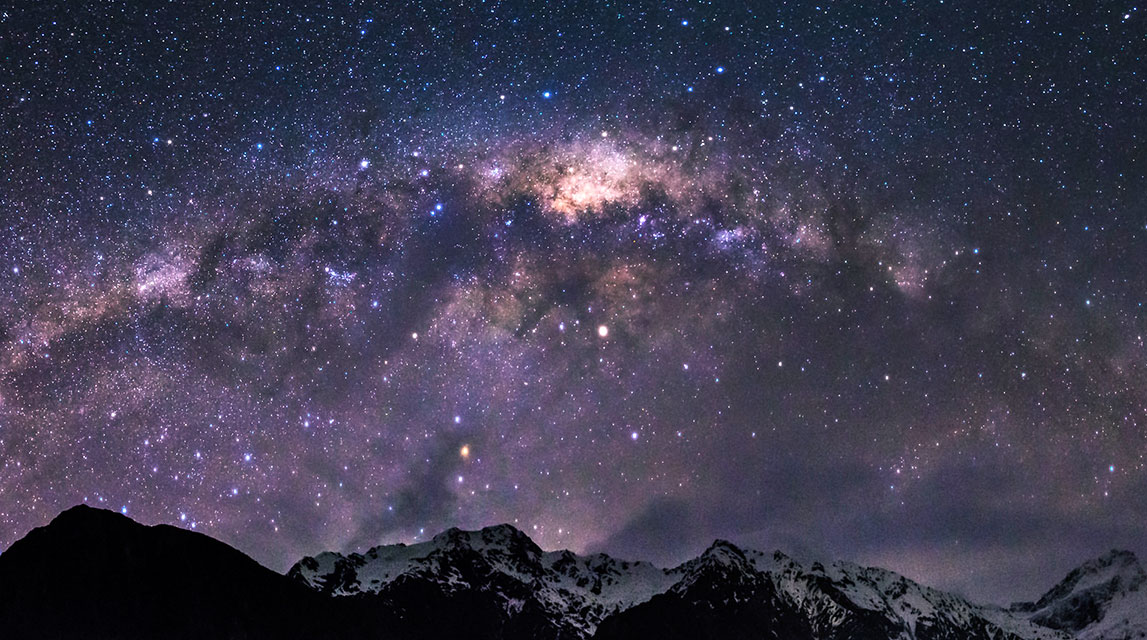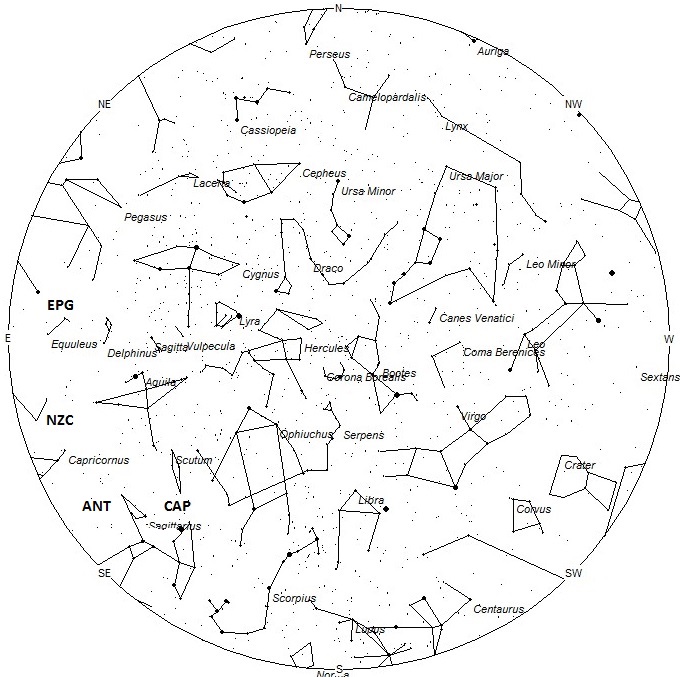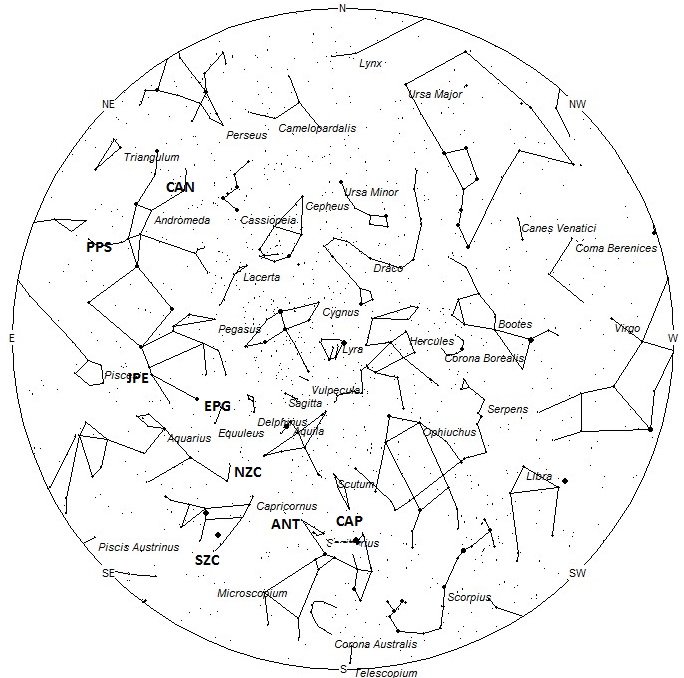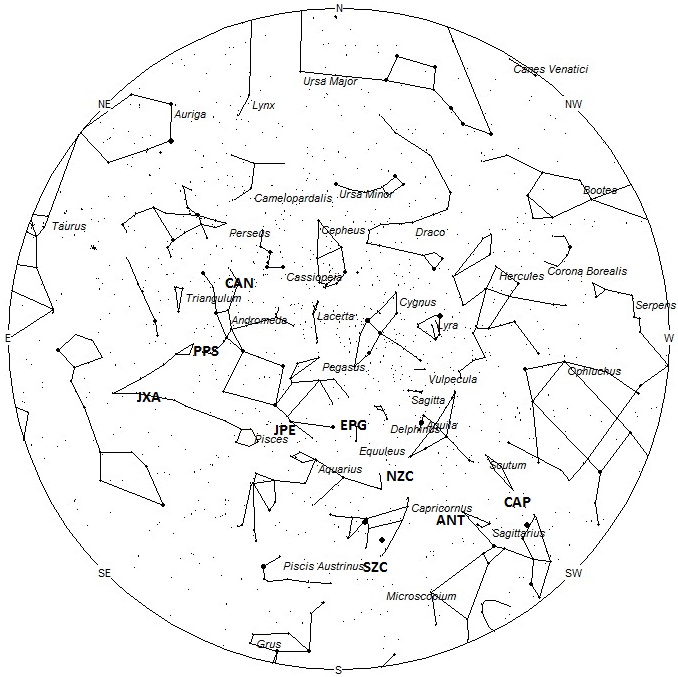
© Paul Stewart (Canon EOS 6D 24-70mm, ƒ/2.8, 24.0 mm, 10s, ISO6400)
Meteor season finally gets going in July for the northern hemisphere. The first half of the month will be much like June with predominately slow rates. After the 15th though, both sporadic and shower rates increase significantly. For observers in the southern hemisphere, sporadic rates will be falling but the overall activity will increase with the arrival of the Southern delta Aquariids during the last week of the month.
During this period the moon will reach it’s last quarter phase on Friday July 6th. At that time the moon will be located 90 degrees west of the sun and will lie rise near 0100 local daylight saving time (DST) for viewers located near mid-northern latitudes. This weekend the waning gibbous moon will rise during the late evening hours and will make it difficult to view meteor activity the remainder of the night as the lunar glare will obscure all but the brighter meteors. The estimated total hourly meteor rates for evening observers this week is 3 no matter your location. For morning observers the estimated total hourly rates should be near 11 no matter your location. Rates during this period are reduced due to interfering moonlight. The actual rates will also depend on factors such as personal light and motion perception, local weather conditions, alertness and experience in watching meteor activity. Note that the hourly rates listed below are estimates as viewed from dark sky sites away from urban light sources. Observers viewing from urban areas will see less activity as only the brighter meteors will be visible from such locations.
The radiant (the area of the sky where meteors appear to shoot from) positions and rates listed below are exact for Saturday night/Sunday morning June 30/July 01. These positions do not change greatly day to day so the listed coordinates may be used during this entire period. Most star atlases (available at science stores and planetariums) will provide maps with grid lines of the celestial coordinates so that you may find out exactly where these positions are located in the sky. A planisphere or computer planetarium program is also useful in showing the sky at any time of night on any date of the year. Activity from each radiant is best seen when it is positioned highest in the sky, either due north or south along the meridian, depending on your latitude. It must be remembered that meteor activity is rarely seen at the radiant position. Rather they shoot outwards from the radiant so it is best to center your field of view so that the radiant lies near the edge and not the center. Viewing there will allow you to easily trace the path of each meteor back to the radiant (if it is a shower member) or in another direction if it is a sporadic. Meteor activity is not seen from radiants that are located far below the horizon. The positions below are listed in a west to east manner in order of right ascension (celestial longitude). The positions listed first are located further west therefore are accessible earlier in the night while those listed further down the list rise later in the night.
These sources of meteoric activity are expected to be active this week.
Details of each source will continue next week when observing conditions will be much more favorable.
| SHOWER | DATE OF MAXIMUM ACTIVITY | CELESTIAL POSITION | ENTRY VELOCITY | CULMINATION | HOURLY RATE | CLASS |
| RA (RA in Deg.) DEC | Km/Sec | Local Daylight Saving Time | North-South | |||
| alpha Capricornids (CAP) | Jul 27 | 18:28 (277) -16 | 22 | 02:00 | <1 – <1 | II |
| Anthelion (ANT) | – | 18:32 (278) -23 | 30 | 02:00 | 2 – 3 | II |
| Northern June Aquilids (NZC) | Jul 03 | 20:32 (308) -06 | 38 | 03:00 | 1 – 1 | IV |
| Southern June Aquilids (SZC) | Jul 06 | 20:56 (314) -29 | 39 | 03:00 | <1 – 1 | IV |
| epsilon Pegasids (EPG) | Jul 10 | 21:24 (321) +10 | 28 | 05:00 | <1 – <1 | IV |
| July Pegasids (JPE) | Jul 11 | 22:44 (341) +09 | 68 | 05:00 | <1 – <1 | IV |
| phi Piscids (PPS) | Jul 05 | 00:52 (013) +24 | 67 | 07:00 | 1 – <1 | IV |
| c-Andromedids (CAN) | Jul 09 | 01:20 (020) +45 | 58 | 08:00 | 1 – <1 | IV |
| July chi Arietids (JXA) | Jul 13 | 01:36 (024) +05 | 69 | 09:00 | <1 – <1 | IV |
 American Meteor Society
American Meteor Society



just saw meteor shoot by for 20 sec long tail bright & long tail, then it broke up…. LA- 35.70875000910612 LO -109.07257750367432
I saw a meteor fall around 0430am malaysia time.
I filmed the meteor it passed over my garden last night July 4th, at first I thought the house across the way had a fire on its roof then I saw it moving.
Seen one a little after 12 am Bethlehem pa it came out of no where an last pretty long an slow was very bright
I just spotted one meteor at 8:41 CT in Chicago IL USA looking west, traveling north to south, very light green in color for about 2-3 seconds before it disintegrated. It was the first one to see with my naked eyes.
Just a little south of Manly, Iowa – I just saw one tonight about 8:45pm and it went from the north to the southeast. It went zooming along, rather low with a bright blue tail and lasted about 15 seconds and then was gone! Very COOL!
I saw a meteor tonight (7/8/18) around 8:45 p.m. near the Mississippi River in Bettendorf, IA, across the river from Moline, IL. It was a bluish green ball with a tail and it was going straight across the sky from the NW to the SE. It didn’t fade away. It seemed to stay the same size then disappear. There were several people in the Midwest that saw something close to the same time. Someone said it was a meteor that broke into 3 pieces.